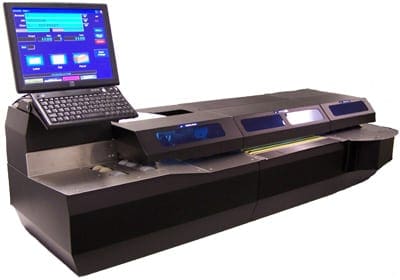
5 Key Steps to Streamline Your Mailing Process with a Postage Meter Rental
Renting a postage meter can significantly improve the efficiency and cost-effectiveness of your mailing process. By following these five key steps, you can streamline your mailing operations and make the most of your postage meter rental.
Step 1: Assess Your Mailing Needs
Before renting a postage meter, it’s essential to evaluate your mailing needs to determine the most suitable device for your business. Consider factors such as:
- Mail volume: Determine your average daily or monthly mail volume to select a postage meter that can handle your workload.
- Mail types: Identify the types of mail you send most frequently, such as letters, flats, or parcels, and look for a meter that can process these mailpieces.
- Features and functions: Consider any additional features that may benefit your mailing processes, such as integrated scales, barcode printing, or reporting capabilities.
Step 2: Choose the Right Postage Meter
Once you’ve assessed your mailing needs, research and compare different postage meter models to find the one that best suits your requirements. Key factors to consider include:
- Processing speed: Ensure the meter can process mail at a speed that meets your volume requirements.
- Ease of use: Look for a user-friendly device that’s easy for your staff to operate.
- Scalability: If your business is likely to grow or your mailing needs may change, choose a meter that can be upgraded or expanded with additional modules.


Step 3: Negotiate Rental Terms and Pricing
When renting a postage meter, be prepared to negotiate rental terms and pricing with your provider. Keep the following points in mind:
- Rental period: Determine the length of the rental period that best suits your needs, whether it’s a short-term rental or a long-term lease.
- Pricing structure: Understand the pricing structure, including any additional fees for services like maintenance or support, and negotiate the best deal for your business.
- Cancellation policy: Familiarize yourself with the provider’s cancellation policy in case you need to terminate the rental agreement early.
Step 4: Train Your Staff
To make the most of your postage meter rental, ensure your staff is well-trained in its operation and maintenance. Provide training on:
- Basic operation: Teach your team how to load mail, print postage, and refill postage funds.
- Advanced features: If your meter includes advanced features, such as reporting or barcode printing, ensure your staff knows how to use these functions.
- Maintenance: Train your team to perform routine maintenance tasks, like cleaning the print head or replacing ink cartridges, to keep the meter in optimal working condition.
Step 5: Monitor and Optimize Your Mailing Process
Once you’ve implemented your postage meter, monitor your mailing process to identify any areas for improvement. Consider the following:
- Postage expenses: Regularly review your postage expenses to ensure you’re not overpaying or underpaying for postage.
- Mail processing efficiency: Assess your mail processing efficiency to identify any bottlenecks or areas for improvement.
- Meter performance: Keep track of your meter’s performance, including any recurring issues or maintenance needs, and address them promptly.
By following these five key steps, you can streamline your mailing process and fully leverage the benefits of a postage meter rental. With the right device, training, and monitoring, your business can enjoy cost savings, improved efficiency, and a professional mailing process.


Understanding the Cost Associated with Postage Meter Rentals
When considering a postage meter rental, it’s essential to be aware of the associated costs. These costs can vary depending on the provider, the specific postage meter model, and your mailing needs. In this section, we’ll break down the different cost components to help you better understand the expenses involved in renting a postage meter.
Base Rental Fee
The base rental fee is the primary cost of renting a postage meter. This fee is typically charged on a monthly, quarterly, or annual basis, depending on the rental agreement. The base fee can vary significantly depending on the chosen model, with more advanced devices or those with higher processing speeds generally commanding higher rental prices. On average, you can expect to pay between $50 and $400 per month.
Postage Deposit
Most postage meter rentals require a postage deposit, which is an upfront payment to cover the cost of postage. This deposit is usually refundable and replenished as needed. Some providers may offer a pay-as-you-go option where you only pay for the postage you use. Generally, a postage deposit costs between $200 and $500.
Equipment Insurance
Some providers may require you to purchase equipment insurance for the postage meter during the rental period. This insurance protects the provider’s investment and covers any potential damage or loss of the device while in your possession. For equipment insurance, you can expect to pay between $3 and $10 per month.


Maintenance and Support Fees
In addition to the base rental fee, some providers may charge additional fees for maintenance and support services. These fees can cover routine maintenance, repairs, software updates, and technical support. Be sure to clarify whether these services are included in the base rental fee or billed separately. These fees may be billed on a monthly basis or on an as-needed basis. Maintenance fees can range from $10 to $50 per month, depending on the provider.
Supply Costs
Operating a postage meter requires supplies such as ink cartridges, labels, and sealing solutions. While some providers may include a limited amount of supplies with the rental, you’ll likely need to purchase additional supplies as needed. Keep in mind that using third-party supplies may void the warranty or rental agreement, so it’s essential to use supplies approved by the provider.
Installation and Setup Fees
Some providers may charge a one-time installation and setup fee to cover the cost of delivering and setting up the postage meter at your location. This fee may also include initial training for your staff on how to operate and maintain the device.
Additional Features and Upgrades
If you opt for a postage meter with advanced features, such as integrated scales or reporting capabilities, you may incur additional fees. These fees can be charged as a one-time upgrade cost or an ongoing monthly fee, depending on the provider and feature.
When evaluating the cost of a postage meter rental, it’s crucial to consider all these factors and compare different providers and models to find the best fit for your business. By understanding the associated costs, you can make an informed decision and budget accordingly for your postage meter rental.
